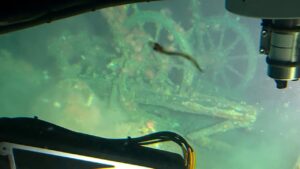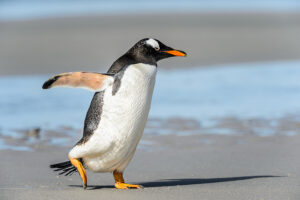If the tongue of the Thwaites Glacier collapses, we’re in trouble. A massive portion of the 400km-wide glacier in west Antarctica floats on the Amundsen Sea. Consensus holds that if it calves off, sea levels could rise by over 65cm in a matter of just a couple hundred years.
That’s why 32 scientists embarked for the so-called “doomsday glacier” from Chile on Thursday. The team, led by Anna Wahlen of Sweden’s University of Gothenburg, will explore the sea under the Thwaites with two robot ships during a two-month expedition. By examining the glacier’s grounding line (where it meets the Antarctic landmass), it aims to gather information about just how fast it’s melting.
‘Doomsday glacier’ concerns and melt rate
The Thwaites Glacier dumps about 50 billion tons of ice into the sea each year. The British Antarctic Survey estimates that it’s responsible for about 4% of the global sea-level rise. The stats don’t point to “doomsday” all by themselves, but Thwaites’ deteriorating structure has alarmed scientists.
Oregon State University ice scientist Erin Pettit said that the glacier is losing contact with Antarctica at the grounding line. Because of that, a more significant piece than usual could flake off into the ocean, where it would melt more quickly. The floating ice shelf is also fracturing rapidly — 10km-long cracks have recently formed in just a year.

Photo: NASA
“You have to have both a hold on the rock, and you have to have structural integrity from there up into the glacier,” Pettit explained. “What we’re looking at is both of those pieces.”
Expedition details; Boaty McBoatface stands by
The visiting scientists will study the Thwaites Glacier aboard Wahlen’s ship, called Ran, and the agile crowdsource-named drone Boaty McBoatface. Aboard the vessels, they’ll record water temperature, monitor the seafloor, and measure ice thickness. They’ll study the ice’s structure, pay special attention to cracks and tag seals, and help the team gather information on nearby islands.
Thwaites’ remote location spurred the expedition. It’s proven difficult to study, hundreds of miles from the closest research station.

Wahlen’s team hopes to clarify uncertainty over how fast or when a collapse might happen and quantify how much sea levels will rise as a result.
“It’s not if sea level is going to go up, it’s when and how much,'” Petit said. “The Thwaites project is focused specifically on the sea level rise question and trying to narrow down that.”
After COVID waylaid the expedition by a year, it’s now underway. The team will arrive at the glacier aboard the research vessel Nathan B. Palmer, which has made the trip before. From there, they’ll start their “doomsday” projections.






